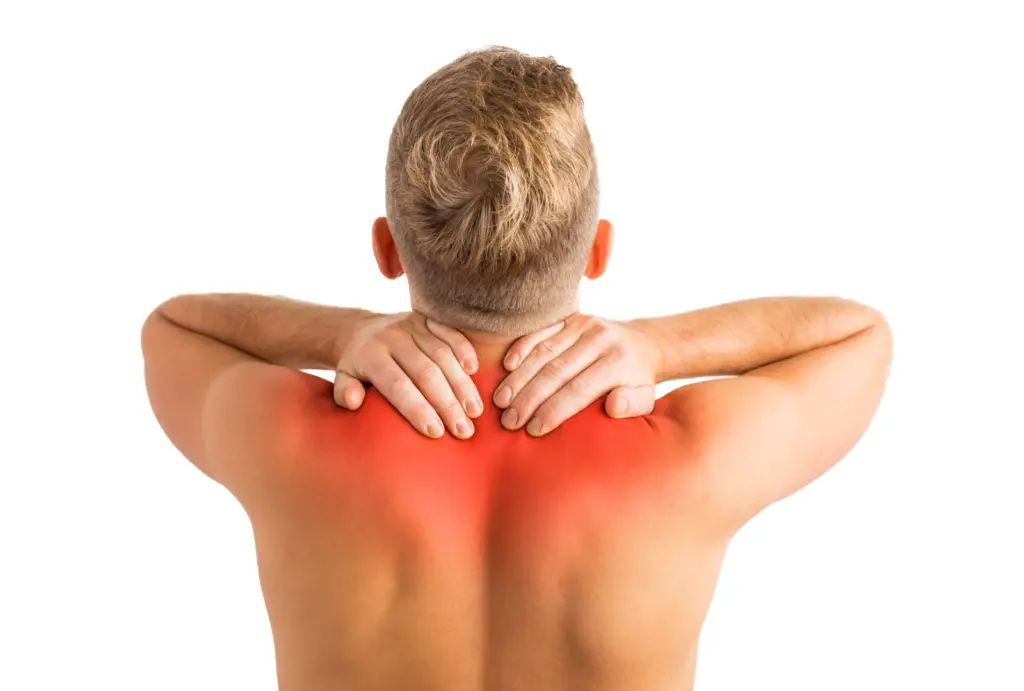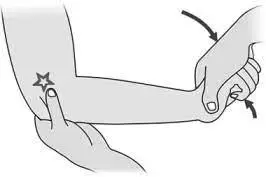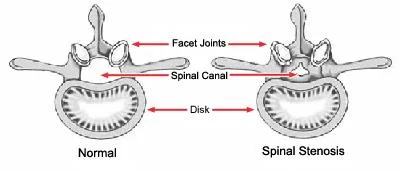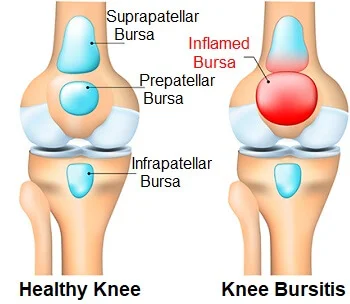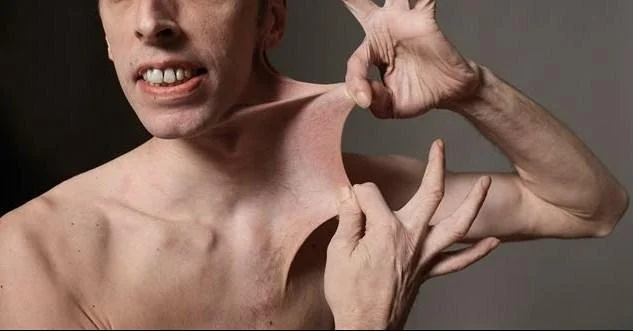Upper back spasm
Table of Contents
What is a muscular spasm in the upper back?
Upper Back Muscle spasm is an involuntary contraction of a muscle and this commonly occurs in large muscle groups including those in the upper back. Physiotherapy is an excellent treatment of muscular spasms in the upper back. mobilizations of the upper thoracic spine by an experienced physiotherapist help to relieve muscle spasms.
What could cause muscular spasms in the upper back?
Muscle spasm is the body’s response to try and prevent movement and is therefore a vital protective mechanism. Muscle spasm commonly occurs following bending, twisting, or heavy-lifting injuries. Muscle spasms could also be seen surrounding an injured area including fractures or nerve injuries to protect the area and minimize further movement.
What are the sign and symptoms of muscular spasms in the upper back muscles?
You would experience pain and cramp or stiffness in the affected muscle. This is often in the upper back area and might be extended to the neck and shoulders. Redness and swelling may be seen and you could find it difficult to move your upper back without significant pain and discomfort. You might find it difficult to get comfortable, especially when lying down and at night which may disrupt your sleep.
Additional symptoms include:
- reduced range of movement
- weakness
- deformity
- cramps
What is the Diagnosis of muscular spasm in the upper back spasm?
The diagnosis process usually starts with a physical examination where the affected region would be inspected by a specialist to detect any visible abnormalities or changes to the tissue. If there is not enough evidence to indicate that muscle spasms cause you this specific set of symptoms, you might be referred to have further tests, such as X-rays, CT scans, or MRI scans.
These additional tests might also help detect any underlying medical conditions that could be affecting your spine, and ultimately your muscles.
If these methods do not help, or the upper back spasms worsen, talk to your therapist. They would ask you questions, do a physical exam, and may run additional tests to see what is causing the spasms. Your therapist might suggest other stretches, chiropractic care, massage therapy, or physical therapy to help relieve the spasm. They might also recommend a prescription muscle relaxant to help the muscle relax or pain medication.
If you notice symptoms of muscle spasms, physiotherapy is a very effective way of reducing your pain and helping you return to an active lifestyle. It might be beneficial to ice the area with frozen peas wrapped in a wet tea towel or an ice pack to help reduce the pain and swelling. You shall begin a physiotherapy program as soon as possible to optimize your recovery. If you suspect you might have a muscle spasm in your upper back, you should not try and treat the condition yourself. Although it is a relatively straightforward condition, it is vital that you receive professional advice from your physiotherapist who could give you advice on which activities to do and which should not be done at this stage. You should try and avoid excessive movements such as twisting and heavy lifting as this would make the problem worse.
When to seek medical help?
If a patient has a new pain in her back for two days, but it goes away, you may be fine. Anything that is progressively getting worse or more painful, however, might need to get upper back spasm treatment.
Simple spasms that are focused on the muscles without systemic or nerve-related symptoms shall not be of any worry. However, he says these spasms could be of concern if you also have any tingling, weakness, or numbness in the upper back, arms, or legs.
Other warning signs include:
- Overall weakness
- Fever
- Major weight loss
Any other symptoms that affect the whole body. These could also be signs of a more serious spine condition such as a bulging spinal disc or narrowing of the spine. They can be caused by cancer, infection, or compression fractures of the vertebrae.
Tauberg says other signs that a muscle spasm might be more serious include:
Heat rash, heat exhaustion, Feeling light-headed, nauseous, or dizzy, or heat stroke, which can occur after working or exercising in a hot environment. Having repeated muscle spasms in the same part of the human body.
If rest and self-care do not relieve the muscle spasms—or if you have any serious symptoms—seek medical help. If patients are worried about a muscle spasm that they have had or are having, it is best to consult with a trained professional about their particular condition.
Initial treatment for upper back spasm
1st Phase: Protection & initial Healing
The main concern is to prevent injury from worsening. Stop doing any aggravating and heavy weight-lifting activities. Change or adjust your working posture and avoid heavy lifting any weight.
Rest: patient’s body needs rest, helping your natural healing processes from kicking in. Limit activities that are worsening your pain. As soon as there’s no pain, don’t test it. Give it time to heal.
Avoid anti-inflammatory medication. The use of anti-inflammatory medication should be avoided, especially during the first 48 hours after injury in the body. Inflammation is the body’s way of getting all the supplies needed for healing at the site of injury in the body. If patients hamper this process you could delay healing taking place.
Compression and heat: Strapping or taping could relieve your pain by supporting the upper back muscles and limiting movement. Any form of heat, like a hot water bottle, bean bag, or warm bath could aid in relieving your pain
Information & Load: It is crucial to understand what is going on in your body to make informed decisions. We are happy to answer all your questions. It is vital to avoid movement and activities that aggravate your symptoms, but not moving at all is equally harmful. You find to find the sweet spot between the two to fast-track the healing process without causing unnecessary delays.
2nd Phase: Establish a pain-free range of movement.
During your examination and test, it will become clear what you’ll be able to do, and what you shall avoid. We identify factors that contribute to your pain, specific to your case. There is a pain-free range of movement that you’re safe to move in, this might be turning, bending, and extending just halfway. On completion of this phase, you shall be able to perform moments within these limits without any pain.
As your rehabilitation progress, we aim to gain a larger pain-free range of movement while your painful range becomes less intense. We aim to maintain and improve bending forward and to the side, as well as turning to look behind you.
3rd Phase: Tissue healing
We monitor the progression of your healing and the fibrous tissue formation. On a cellular level, we are able to accelerate tissue healing using dry needling, Laser, Ultrasound, and electrotherapy. This phase will be specific to your case and the underlying cause of your upper back muscle spasm.
Tell me more about the treatment
4th Phase: Stability
During each session, we would re-evaluate if you are achieving the necessary targets for the tissue to be able to handle tensile, elastic, and compression forces. It is crucial to have stability from your center to enable control of movement further down, that is in the limbs. This could be very difficult to maintain if you have had long-term problems and faulty movement patterns. Firstly we would guide you to keep the thoracic spine neutral with small movements. As you get more accustomed to this we would change your exercises to keep the thoracic spine neutral with larger movements elsewhere in the body. This enhances the recovery process by increasing circulation to the tissue while maintaining strength and avoiding muscle atrophy.
5th Phase: Muscle Strength & Full Range of Movement
The most vital component of rehabilitation is to regain the full range of movement of the muscle fibers. The scar tissue that forms inside the site of the injury must be able to lengthen and allow the muscle to contract without any restrictions. We use massage, stretches, and neurodynamic mobilizations to achieve a full range of movement. On completion of this phase, the therapist shall be able to bend and turn to your full capacity without any pain or restrictions.
6th Phase: Muscle Strength
It’s common to feel some pain when we start contracting the muscle – this is due to breaking down abnormal fibrous tissue adhesion. Once the muscles have control over movement, we aim to increase endurance by adding load, like weights to your exercises or making the repetitions more or faster. On completion of this phase, you shall be able to lift something of average weight, carry groceries and sit comfortably at work, in a better posture, for half a day.
7th Phase: Testing for return to activity
Gradually grow up toward your previous intensity of normal activities and training to determine if your injury is able to withstand the repetitive loading without flare-ups. physiotherapist guides you to reengage in safe increments, and adjust where it’s essential. We will follow your progress and adapt where needed. He is playing golf or making a wedding dress, we would get you back to where you need to be.
8th Phase: High Speed, Power, Proprioception
If you participate in sports, this is the phase where we get you back to training in increments. During this phase our physiotherapist will guide you to return to normal activities, this includes challenging your muscles past their ‘normal’ boundaries to determine how it reacts to different forces. Ultimately physiotherapist prepares you to return to participating in your sport. Whatever must be done – we will get you there. Throwing, catching, swinging a club or racket.
Physiotherapy treatment for muscular spasms in the upper back.
You will be shown an effective range of movement and strengthening exercises and hydrotherapy may be used with your exercise program.
- Electrotherapy techniques such as ultrasound and Short wave diathermy(SWD) can be used to reduce pain and facilitate the healing process of the affected muscle. Massage will be used to reduce the spasm and help restore normal movement.
We are trained to differentiate between the issues within the different tissue in the body. Our physiotherapists could load joints, determine stability, length, strength, and endurance of muscles, end diagnose tendon or ligament injuries. We consider local and compensatory movement patterns that cause or sustain your issues in the body. the patient can trust us to determine the cause of your upper back muscle spasm to prevent recurrence in the future.
Get expert advice.
Exercise for Upper back spasm
Arm Slides: Stand against a wall and position your arms to close against the wall, palms facing the wall Keep your arms against the wall while slowly sliding them up to your head, if possible; if not, as high as is comfortably possible to perform. Gently reverse and move your arm down; relax and repeat. stretching his arms overhead against a wall. Standing close to a wall for bodily support, and gently sliding the hands and arms up the wall can be one way to stretch the muscles in your upper back.
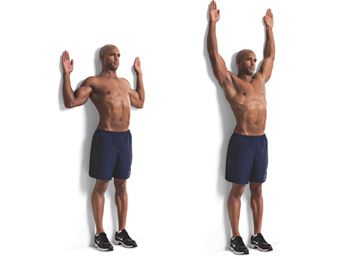
Shoulder Blade Squeeze: Sit or stand with your arm resting by your sides. Squeeze and hold your shoulder blades together for 5 to 10 seconds. Release the squeeze, relax and repeat. sitting on the beach doing should blade squeezes
Squeezing your shoulder blades together for 5 to 10 seconds may help relieve upper back pain.
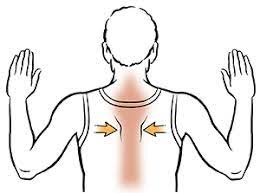
Upper Back Stretch: Sit in a chair. Cross both arms behind your head and bend gently forward. Slowly arch backwards; release and repeat. stretching her neck and upper back with her hands behind her head

Shoulder rolls exercise (2 sets of 10 repetitions): To perform shoulder rolls. March on the spot with the arms straight down by the sides of the human body. Roll the shoulders forward five times. Roll the shoulders backwards five times then repeat.

Trunk rotation: To perform the trunk rotation. Lie on the back side with the knees bent and the feet flat. Keeping the knees bent, gently rotating them to the right side. Hold this position for a few seconds. Return the knees to the center. Repeat the stretching on the left side. repeat this on both sides.

The overhead arm reaches: To perform the overhead arm reach. Begin seated or standing. Stretch the arms above the head. Lean to the right, keeping both arms stretched side upward. Hold the stretch, and use the right hand to gently pull the left arm to the right side. Return to the starting position. Repeat the stretch several times on both sides of the arm.
Cat-camel Pose: To perform this yoga pose. Begin on all four limbs. The hands should be beneath the shoulders and the knees directly beneath the hips side. This is the Table Pose. Slowly arch the back upward, pushing down through the shoulders and dropping the head to the chest side. This is the Cat Pose. Hold it for a few seconds almost 5 to 10sec, then release. Return to the starting position of all four limbs, but continue to drop the lower back toward the floor. Gently move the head backside so that the chin and nose point upward. This is the Camel Pose. Hold it for a few seconds around 5 to 10 sec, then release. Return to the Table Pose and repeat the whole sequence-wise exercise many times.

Wall stretch: To perform the wall stretch. Stand with the right side of the body facing a wall side. Bend the right arm at the elbow, placing the forearm against the wall side. The upper arm should be completely straight so that the elbow joint forms a (90-degree) angle. Gently take a step forward with the right foot and twist to the left side, allowing the right side of the shoulder and upper back to stretch. Hold the stretch for a few seconds around 5 to 10 sec, then return to the starting position. Repeat the stretch many times on both sides.

Neck flexion: To perform the neck flexion.Sit or stand up straight. Gently drop the chin to the chest, making sure to stop if there is any pain or discomfort in the neck region. Roll the head so that the right ear is close to the right side of the shoulder. Hold this position for a few seconds almost 5 to 10 sec. Keeping the chin down, slowly rotate the head back, continuing til the left ear is near the left shoulder. Hold this position for a few seconds almost 5 seconds. Continue this gentle rotation of the head from shoulder joint to shoulder joint many times. Pause and hold the stretch whenever there is muscle tension.

Child’s Pose: To perform this yoga pose. Beginning from the Table Pose, then bring the big toes together. Slowly lower the hip joint toward the floor, resting the buttocks on top of the feet. While doing this child pose, bring the chest down to the thighs and the forehead down to the floor area. Stretch the arms out in front, with the palms touching the floor area again in this position for several breaths or as long as feels comfortable. Pushing through the arms, slowly return to the starting position yoga pose.

Thoracic extension exercise: A person needs a yoga block or foam roller for thoracic extension exercise. To perform the thoracic extension.Sit on the floor. Place any block or roller on the floor behind the body, and slowly lie back so that it supports the upper back area. The buttocks shall be on the floor and the hands shall be behind the head, supporting the head and neck. For a longer stretch, extend the arms above the head while bending the body backward side. Take a few deep breaths, and let the back muscles and shoulder muscles relax. Repeat the exercise several times almost 10 to 15 times.
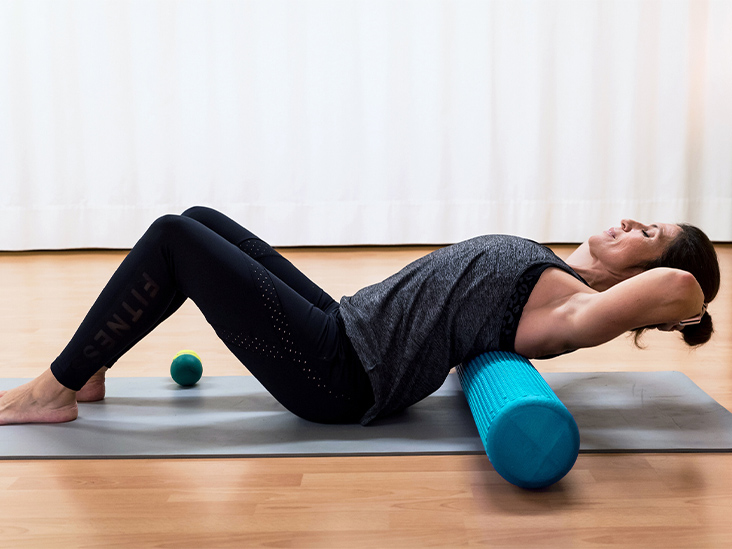
Prevention of upper back spasm
if the patient doesn’t have any nerve-related or whole-body symptoms, there are several things a patient can do to prevent or treat upper back spasms. These include:
- Stress relief
- Regular aerobic exercise
- Yoga
- Improved workplace ergonomics, which is how you are sitting or standing while working
- Massage therapy
- Physical therapy
- Muscle relaxant, if prescribed by your physician.
- These tips for the prevention of upper back spasms, especially when exercising
- Stay hydrated
- Perform dynamic stretching (a warm-up) before working out
- Perform static stretches after your workout
- Maintain a strong core
FAQ
The most common causes of upper back spasms are muscle strain or muscle sprain due to stress, bad ergonomics, a major fall, injury, or auto accidents.
Home treatment includes using heat or ice, taking over-the-counter (OTC) pain medicines, and avoiding activities that may cause back pain. For a back spasm that doesn’t get better with home care, your physiotherapist might prescribe medication. Treatments like massage or manipulation might also help ease a back spasm.
Spasms could occur in any muscle in your body and could cause sharp and intense pain. Back spasm episodes might last anywhere from a few days to a few weeks, and when your muscle contracts, it may also feel hard to the touch or appear twisted under the skin. From our expert at Premier Spine Institute,
A spinal muscle spasm can represent something serious, such as a micro tear around a spinal disc that could generate enough inflammation to cause muscles to tense. In most cases, however, a muscle spasm in the back is a symptom of a mild muscle injury in the upper back.
If back pain could be associated with a specific activity, such as lifting or twisting wrong, and the pain goes away within 72 hours after resting and applying ice, it’s usually nothing to worry about. However, if pain creeps on gradually, appears suddenly, or does not disappear, you may have a more serious condition.

